17 Companion Plants For Pumpkins-Help Them THRIVE!
Companion plants for pumpkins can immensely benefit your pumpkins when done right. These companion plants are not there to accompany your pumpkins, but instead, they play a vital role to keep your pumpkins well and healthy.
At times, the companion plant might also benefit from the pumpkin too! Mother nature certainly has her unique ways to make things work!
But be cautious, not all plants are compatible with pumpkins!
So, what kind of companion plants are best for pumpkins you ask?
And that is the question we are about to deep dive into in this extensive post on the best companion plants for pumpkins.
At a Glance: 17 Best Companion Plants For Pumpkins That You Should Know
1. Sunflowers
2. Strawberries
3. Cabbage
4. Tomatoes
5. Spinach
6. Beets
7. Lettuce
8. Celery
9. Thyme
10. Rosemary
11. Melons
12. Corn
13. Parsnips
14. Chamomile
15. Nasturtium
16. Alliums
17. Apple
Affiliate Link Disclosure
Some of the links here are affiliate links, and I may earn if you click on them, AT NO EXTRA cost to you. I hope you find the information here useful! Thanks!
Related posts
- Companion Plants For Leeks: 17 Plants That Will Boost Growth
- 27 Companion Plants For Mint To Thrive (And Avoid!)
- 23 Companion Plants For Thyme To Help It THRIVE! [2023]
- 23 Companion Plants For Sage & What To Avoid! [2023]
- 13 Companion Plants For Turnips: Best and Worst! [2023]
- 27 Companion Plants For Basil, The Best and Worst! [2023]
- 25 Companion Plants For Rhubarb, Which to Avoid & Growing Tips!
17 Best Companion Plants For Pumpkins
1. Sunflowers
Sunflowers are great companion plants for pumpkins for two reasons.
First, sunflowers are one of the best options when it comes to inviting beneficial insects and animals. In this case, pollinators like bees are great to help pollinate your pumpkin patch.
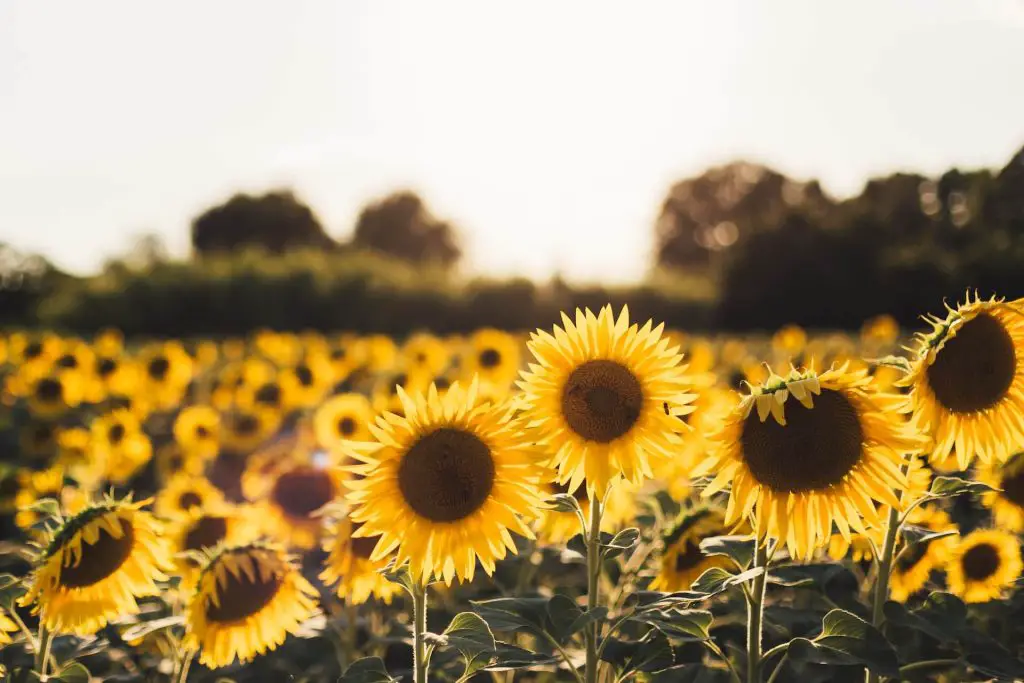
Since the sunflowers are big and vibrant, this will also naturally attract birds to your pumpkin patch. These birds will in turn help eat pesky insects that may potentially harm your pumpkin patch.
Next, sunflowers (the branching variant) are great as a natural vertical trellis to help develop the pumpkin vines. Note that this works only for small pumpkin variants as big ones may bring down your sunflowers instead.
2. Marjoram
Marjoram is a herb whose flavor profile is often described as subtly sweet with hints of spicy notes. Gardeners swear by the myth that planting marjoram will improve the overall flavor of your crops. This of course doesn’t exclude the pumpkins.
So if you are wondering what to grow with pumpkins to improve their flavors other than using great fertilizers, give marjoram a try!
Perhaps, it may even be good enough for a Pumpkin Spice Latte.
Personally, this will be the next experiment on my checklist to try. Furthermore, I know marjoram goes extremely well with a lot of dishes. So it is a win anyway!
3. Marigold
One of the many annoying pests that destroy the pumpkin patch is the root-knot nematodes. Fortunately, mother nature has its ways of dealing with them and the answer is marigolds.
The marigold plant is one of the few plants known that can produce a chemical compound that is harmful to nematodes.
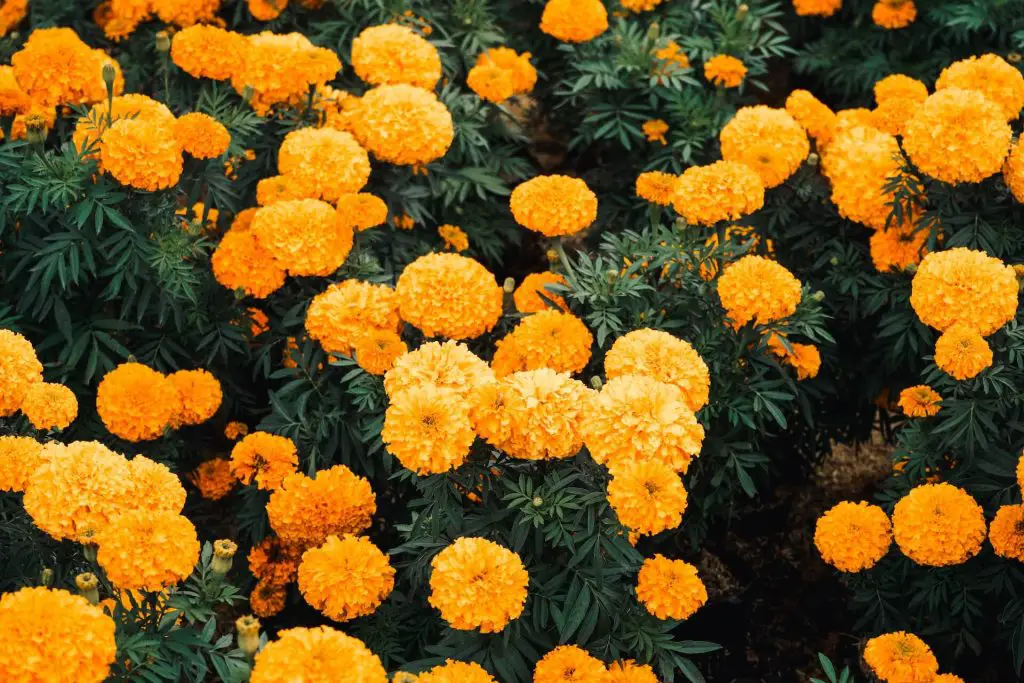
Research shows that the French Marigold variant is the best to suppress the nematode population while the Tangerine Marigold variant will hinder the reproduction of the nematodes.
That said, nematodes are pretty prolific and it may be difficult to get rid of them entirely.
Pro tip! After harvesting your pumpkins, plant some marigolds on the pumpkin patch to continue keeping the plot nematode free until your next rotation!
4. Nasturtiums
Nasturtiums are another type of flowery plant which excels at attracting pollinators like bees and butterflies. Perfect to pollinate your pumpkin patch.
However, nasturtiums do attract certain kinds of insects; both good and bad. The bad are the aphids, and the good are the ladybugs, which coincidentally feed on aphids.
Hence, you can use nasturtiums as a sacrificial plant as pumpkin vines are also susceptible to aphids’ attacks. The presence of nasturtiums will help draw the aphids away and then the ladybug will clean them up for you. Convenient!
And did I mention that nasturtium leaves are a perfect addition to your fresh garden salad bowl?
5. Pole Beans
If you didn’t know already, pumpkins are one of the many crops that require plenty of nitrogen during their early stages in life. Conveniently, pole beans are able to fulfill this role to provide the necessary nitrogen supply to the pumpkins!
You can opt for other non-climbing legumes that fix nitrogen but since they are all bushy, this may hinder your pumpkins from getting sufficient exposure to sunlight.
However, pole beans require you to build structures for them to climb. And this is where the next companion crop comes in – corn.
6. Corn
The pumpkin-corn-pole beans combo is a well-known combination when it comes to companion plants for pumpkins. The corn plant structure is tall, slender, and has the right strength to support the pole bean vines.
And so, the corn occupies the vertical space while the pumpkins occupy the ground space. All in all, the perfect space conservation technique to make the best out of your gardening plot.
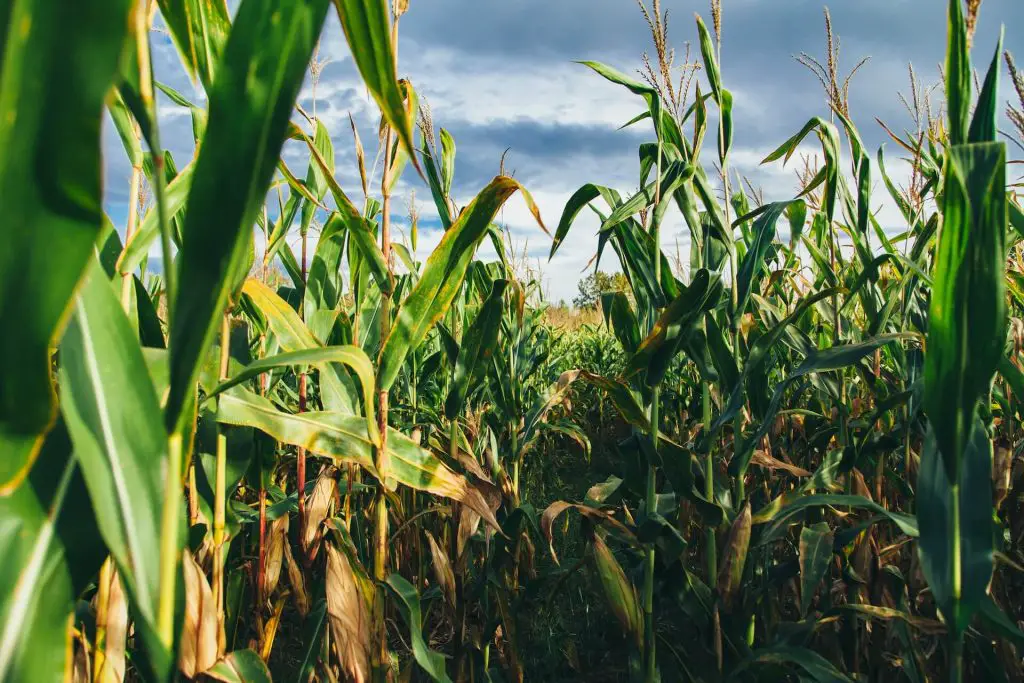
7. Lavender
These pretty flowery plants are not only eye-pleasing to me but to pollinators too! By having lavender near your pumpkin patch, expect pollinators like bees to visit your garden and help you pollinate your pumpkin patch.
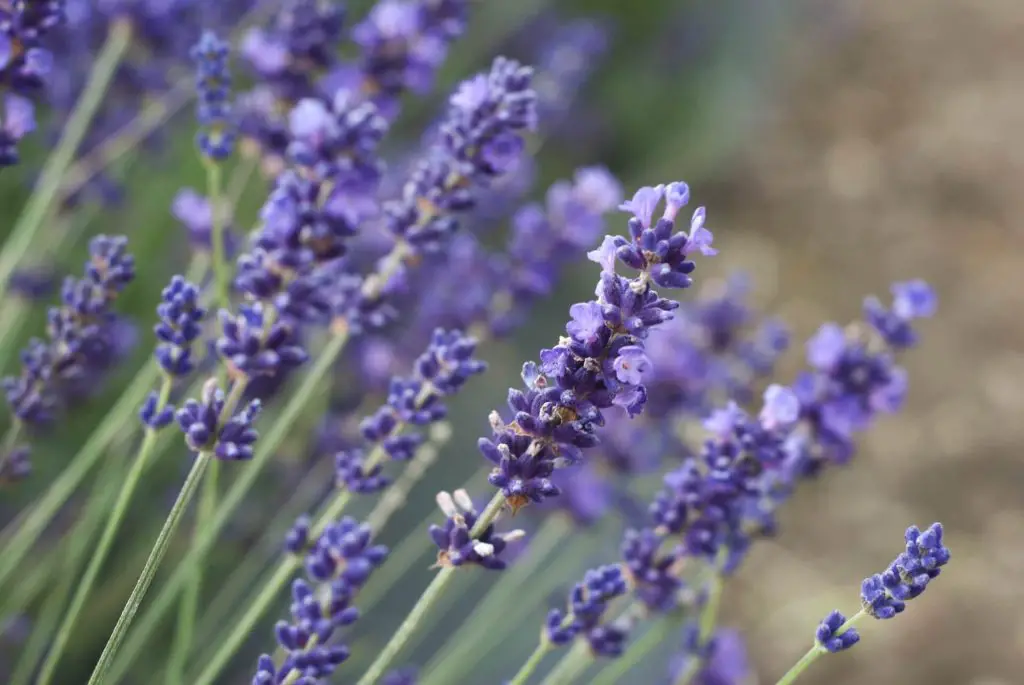
Personally, I love how lavender adds vibrant purple color to my garden. And the best part is that I’ve learned that the seeds of lavender have a scent that helps you get restful sleep. You won’t see me sleeping without a pouch of lavender seeds by my bed ever again!
8. Korean Liquorice Mint
The Korean Liquorice Mint is an excellent plant to deter pests from your pumpkin patch. The plant itself does not emit any scents to deter the pests but instead, they attract a certain insect called the hoverfly.
Hoverflies will tend to lay their eggs on leaves. The hoverflies larvae are a natural predator of some of the annoying pests that may invade your pumpkin patch; like aphids and mites.
9. Radish
The radish is considered a sacrificial companion plant for pumpkins. Fortunately, you will not be sacrificing the radish itself.
The pest I am referring to here are the flea beetles that often feast on pumpkin plants. These flea beetles do have a preference for radish leaves.
And so, by planting the radish by your pumpkin patch, they will distract them away from your pumpkin patch.
10. Zucchini
The zucchini is a squash that is in the same family as the pumpkin plant.
This makes the zucchini a great companion plant to pumpkins since they both require the same care and nutrients. And the best part is that zucchini attracts pollinating bees which are essential for both zucchini and pumpkins to flourish.
11. Cucumber
Similar to zucchini, cucumbers are also favorites to pollinators like bees, and butterflies. Plus, since they can grow on a trellis, cucumbers don’t compete for spacing with the pumpkins.
12. Chives
Chives are another great choice if you want to attract pollinators like bees and butterflies to your pumpkin patch. Furthermore, they are easy to grow and maintain with minimal care. More time to tend to your pumpkins!
Also, chives deter cucumber beetles which are notoriously known to carry bacteria that cause plants to wilt. And their favorite targets are squashes, including pumpkins!
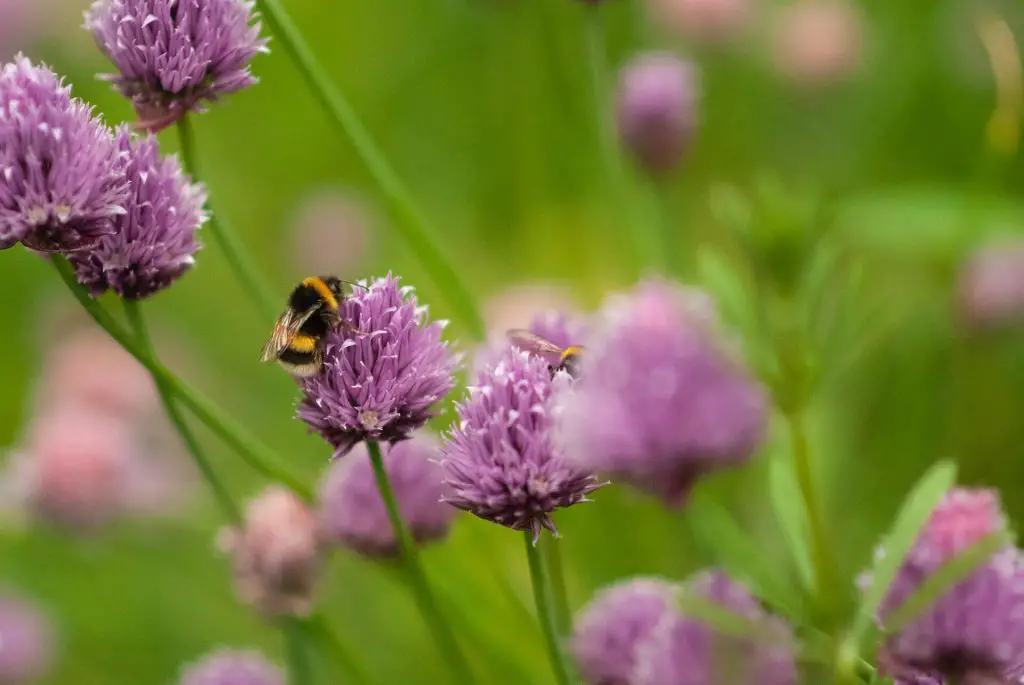
13. Hubbard Squash
What to plant near pumpkins if your pumpkin patch has a squash bug invasion? Nature’s answer is the Hubbard Squash.
The Hubbard Squash is a great choice of sacrificial companion plant for pumpkins if your pumpkin patch has had a squash bug infestation. These squash bugs prefer Hubbard Squash leaves to pumpkin leaves.
Pro tip! I’d highly recommend you plant the Hubbard Squash ahead of your pumpkins (about 2 to 3 weeks) to draw these bugs away from your pumpkin patch first.
14. Peas
Like the pole beans, peas are also excellent choices as natural nitrogen fixers for your pumpkins. If you do not have access to pole bean seeds, peas are a great alternative.
Since they are also light, they have no trouble using the corn plant as a supporting trellis.
15. Lettuce
Lettuce does not have any direct benefits to pumpkins as a companion plant. However, it is a great choice of crop if you have some unused space around your pumpkin patch.
This is because lettuce roots do not penetrate deep into the ground and hence will not compete for nutrients with your pumpkins. Lettuce is the perfect plant to make use of every inch of your pumpkin patch in this case.
16. Chamomile
I am sure you are familiar with the smell of chamomile by now, which coincidentally, is my favorite type of flower tea.
And luckily, the beetles which feast on pumpkin leaves do not like the scent of chamomile at all which makes it an excellent pumpkin companion plant if there are beetles in your garden.

17. Dill
Lastly, I’d recommend dill as a companion plant for pumpkins. The aroma from dill, although pleasant to us humans, is a natural repellent for cabbage moths which often plague pumpkin patches.
Of course, not all plants are great companion plants for pumpkins. Most are of course neutral and have no benefits to your pumpkins but there are some plants that you should absolutely avoid planting with your pumpkins.
Plants To Avoid As Companion Plants For Pumpkins
Now that we have covered what grows well with pumpkins, there are certainly some plants to avoid plants near pumpkins.
1. Potatoes
The pumpkin and potato is a definite gardening disaster when considering companion plants for pumpkins. Potatoes loosen the ground as they grow and this affects the roots of the pumpkin when it comes to competition for nutrients.
Furthermore, potato leaves will potentially shade your pumpkins from sunlight exposure which certainly is a huge red flag when it comes to pumpkins growth.
The same could be said for other root vegetables like beets.
2. Brassicas
Brassica is a group of plants that includes broccoli, cauliflower, kale, brussels sprouts, etc. These plants are known to compete for nutrients with the pumpkins. In turn, this will stunt the growth of your pumpkins.
You certainly do not want these kinds of pumpkins if you are aiming to grow gigantic pumpkins!
So avoid brassicas at all costs!
Why Should You Consider Companion Plants For Your Pumpkins?
Companion planting is a traditional farming method that uses other plants’ characteristics to solve problems for other plants naturally. That said, companion planting with pumpkins is no different story either.
Now, before you sow your pumpkin seeds, let us dive in and understand why you should practice companion planting pumpkins.
1. Deters Pest Infestations
Pests are the main concerning factor for all farmers and gardeners out there. All it takes is a single infestation to wipe out the sweat and tears that you have poured into your garden or farm.
I absolutely understand the frustration of having to uproot your crops because they are ravaged by pests.
Since there is a great movement to stop relying on pesticides, companion planting is the next best thing to fend off pests. For example, alliums like garlic and leek are excellent plants to keep annoying pests and insects at bay.
But if the pests are still overwhelming your crops, your next best option might just be an organic insecticide.
2. Culinary Sense
Another reason for companion planting is simply just because it makes culinary sense. The perfect example will be planting both tomatoes and basil together.
I am sure you have seen the tomato and basil combination everywhere; salsa, soup, pizza, salad, and the list go on. While at the farm, basil plays a key role to repel pesky pests like hornworms and flies from the juicy tomato plants.
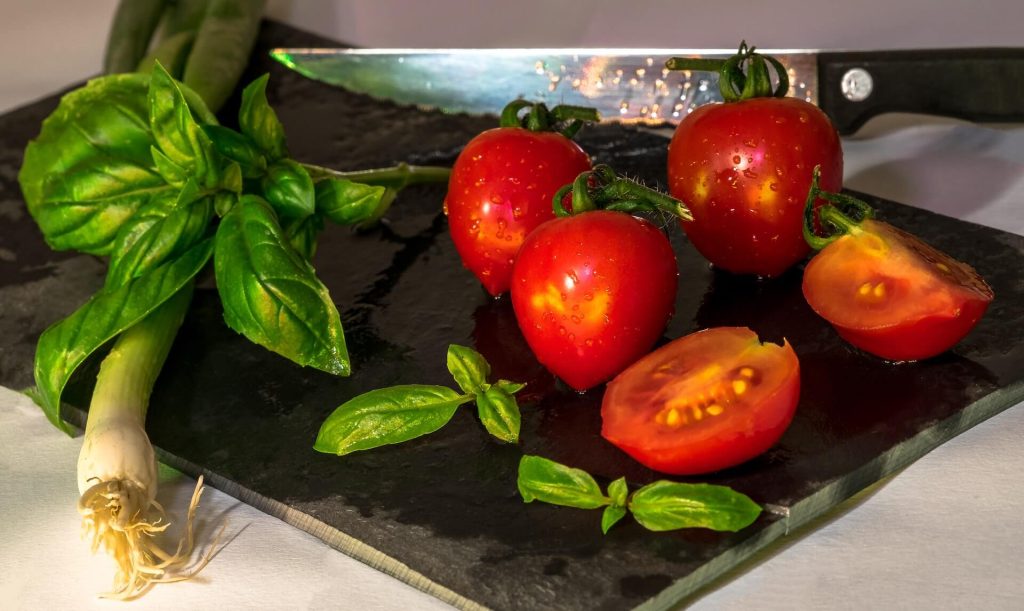
3. Invites Beneficial Insects
With the existence of pests feasting on our precious crops, the food chain extends to the predators of these pests. However, we just cannot send out an open invitation to these insects.
But, by understanding the laws of nature, we can use that knowledge to our advantage.
In this case, certain plants attract a certain type of insect. Hence, by planting the right plant you can direct these insects your way to clear up pests in your garden or farm.
4. Natural Shade
Some plants cannot be exposed to the sun for a prolonged period of time but building a covered shade mesh may cause too little sunlight exposure.
By using companion plants, sprawling crops like pumpkins can get some shade from vertically growing plants with large overbearing leaves.
5. Natural Soil Regulation
Needless to say, healthy soil is the one key factor when it comes to the growth of your crops.
If you know what kind of nutrition your plants need, you could artificially provide them with the appropriate soil mixture.
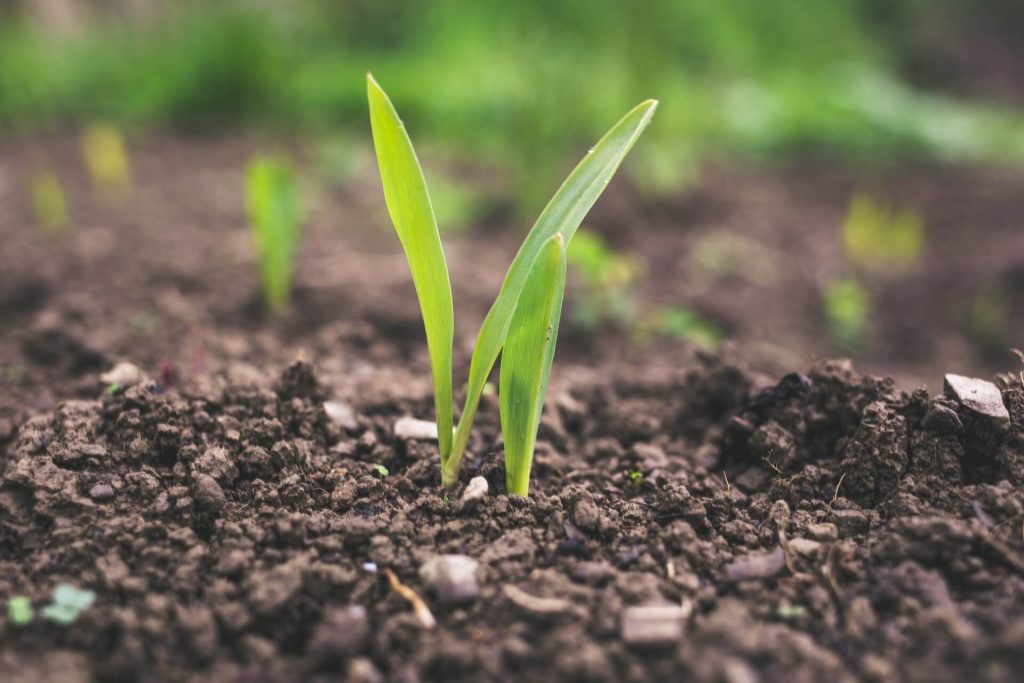
But the other alternative is to provide the required nutrients (i.e. nitrogen and potassium) via a companion plant.
One easy example would be planting a non-nitrogen-fixing plant that requires nitrogen with a nitrogen-fixing plant like some legumes.
6. Hinders Weed Growth
Weeds can be pretty annoying to deal with in your garden. Not only do they cause your plot of land to look messy and unkempt, but the weeds also compete for resources with your crops.
And so of course, low-lying companion plants like mints are perfect to prevent weeds from sprouting near your crops.
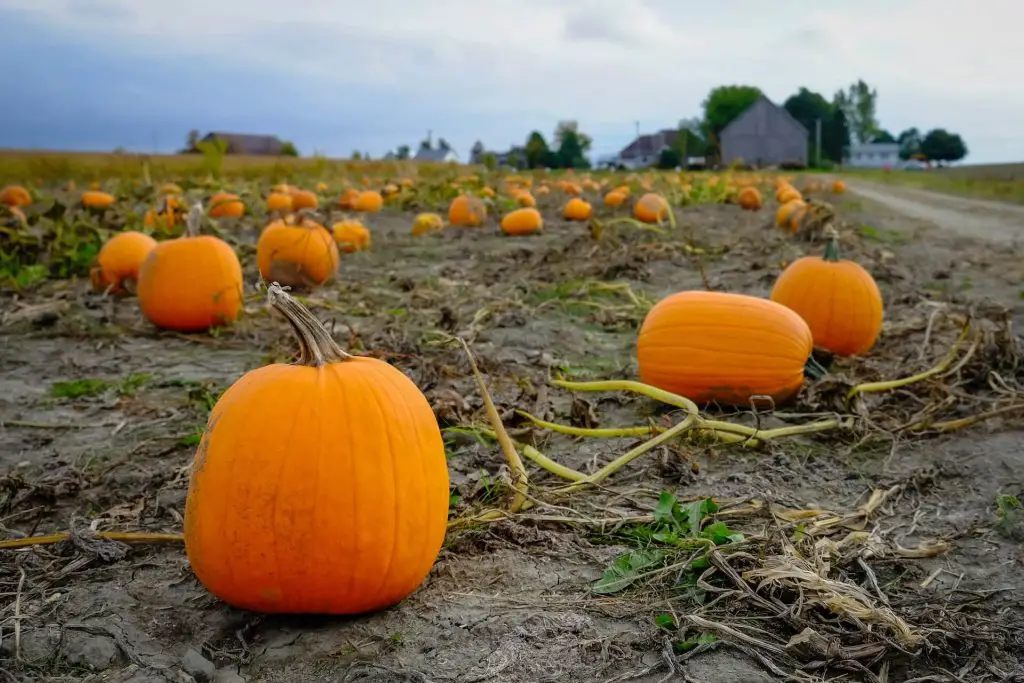
FAQ On Companion Plants For Pumpkins
What Can You Not Plant With Pumpkins?
Some of the plants not recommended to be planted with pumpkins are potatoes, or anything in the brassicas (cabbage) family like cauliflower, kohlrabi, Brussels sprouts, or kale. Both of these groups of plants have the ability to compete against your pumpkins for ground space and water rendering your pumpkins to be malnourished.
What Plants Can Be Planted With Pumpkins?
Plants that attract pollinators are best to be planted with pumpkins as pumpkins require pollination to flourish. Some examples are chives, lavenders, sunflowers, and nasturtiums are great companion plants which naturally attract pollinators. Also, you would want companion plants like chives, radishes, and marigolds to deter pests from your pumpkin patch.
Can You Plant Tomatoes Next To Pumpkins?
Yes, you can plant tomatoes in the same area as your pumpkin patch to keep away insects that would eat or damage your pumpkin plants. In this case, tomatoes act as a sacrificial companion plant to distract the flea beetles. Flea beetles that feast on pumpkins have a preference for tomatoes compared to tomatoes
Will Pumpkins Choke Out Other Plants?
Yes, pumpkins will choke out other plants since pumpkins are aggressive garden plants. If companion planting for pumpkins is not well planned, you will find your pumpkins competing for ground space and also water against your other plants.
Conclusion: Companion Plants For Pumpkins
And that concludes the list of beneficial companions’ plants that are best for growing pumpkins. If it helps, you can always tabulate the list in a pumpkin companion planting chart for ease of reference.
With this extensive list of companion plants for pumpkins, I am sure it covers all your needs to select the best companion plant to help promote the growth of your pumpkins and keep pests away from your precious pumpkins.
My pumpkins have certainly benefited from it and are growing well in spring, and I certainly cannot wait to harvest them to make my favorite pumpkin pie. Plus, I recently found out that pumpkins are really great for your health!
If you find this guide helpful, do share this with your gardening friends to help them grow some healthy plump pumpkins too!
Related posts
- 15 Companion Plants For Cauliflower (And 5 To Avoid)
- 15 Companion Plants For Rosemary (And 5 To Avoid)
- 13 Yarrow Companion Plants & What To Avoid! [2023]
- 13 Companion Plants For Bok Choy-Best & Worst![2023]
- 17 Companion Plants for Raspberries & What To Avoid!
- 10 Best Companion Plants For Celery & What To Avoid!







![How Often To Water Ferns Outside [+Growing Tips!]](https://aboveandbeyondgardening.com/wp-content/uploads/2021/10/How-Often-To-Water-Ferns-Outside-768x512.jpg)
![15 Companion Plants For Cantaloupe & What To Avoid! [2023]](https://aboveandbeyondgardening.com/wp-content/uploads/2022/11/companion-plants-for-cantaloupe-2-768x512.jpg)
![How To Harvest Rosemary [The RIGHT Way!]](https://aboveandbeyondgardening.com/wp-content/uploads/2021/10/How-To-Harvest-Rosemary-768x512.jpg)
![How To Harvest Parsley Without Killing The Plant -Exact Steps! [2023]](https://aboveandbeyondgardening.com/wp-content/uploads/2022/10/how-to-harvest-parsley-without-killing-the-plant-768x512.jpg)
![13 Companion Plants For Bok Choy-Best & Worst![2023]](https://aboveandbeyondgardening.com/wp-content/uploads/2022/10/Companion-Plant-For-Bok-Choy-8-768x511.jpg)
![How To Grow Campari Tomatoes From Scratch [A Complete Guide]](https://aboveandbeyondgardening.com/wp-content/uploads/2022/08/How-To-Grow-Campari-Tomatoes-7-768x512.jpg)